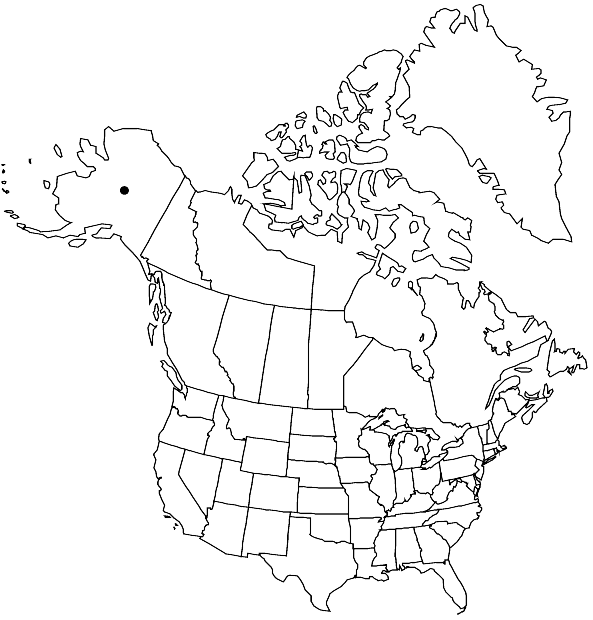Difference between revisions of "Codriophorus corrugatus"
Bryologist 107: 377, figs. 1–77. 2004,.
FNA>Volume Importer |
imported>Volume Importer |
||
| (6 intermediate revisions by 2 users not shown) | |||
| Line 22: | Line 22: | ||
|distribution=Alaska;arctic and temperate Asia. | |distribution=Alaska;arctic and temperate Asia. | ||
|discussion=<p>Of conservation concern.</p><!-- | |discussion=<p>Of conservation concern.</p><!-- | ||
| − | --><p>Codriophorus corrugatus is an east-Asian northwestern North American disjunct boreal-temperate-montane species. It has only once been collected in North America, in southern Alaska at Dyer’s Lake between Anchorage and Fairbanks. The species is widely distributed but scattered in temperate eastern Asia. It is readily distinguished from all other species of the genus by its peculiar leaf acumen and costa. The snake-like leaf acumen is corrugate or ruffled in the distal part and erose-dentate, cristate, or papillose-crenulate at the apex. The short costa typically extends to the mid leaf or only a little more distally in some leaves and is often laterally spurred or forked at the apex. The species may be mistaken for C. fascicularis but in that species the costa extends to 3/4 or further up the leaf and is entire throughout. Also, the leaf apex in C. fascicularis is entire, whereas in C. corrugatus it is erose-dentate or cristate. The peristome teeth in C. fascicularis are generally shorter, up to 600 µm, whereas C. corrugatus has longer teeth, 640–760(–950) µm.</p> | + | --><p><i>Codriophorus corrugatus</i> is an east-Asian northwestern North American disjunct boreal-temperate-montane species. It has only once been collected in North America, in southern Alaska at Dyer’s Lake between Anchorage and Fairbanks. The species is widely distributed but scattered in temperate eastern Asia. It is readily distinguished from all other species of the genus by its peculiar leaf acumen and costa. The snake-like leaf acumen is corrugate or ruffled in the distal part and erose-dentate, cristate, or papillose-crenulate at the apex. The short costa typically extends to the mid leaf or only a little more distally in some leaves and is often laterally spurred or forked at the apex. The species may be mistaken for <i>C. fascicularis</i> but in that species the costa extends to 3/4 or further up the leaf and is entire throughout. Also, the leaf apex in <i>C. fascicularis</i> is entire, whereas in <i>C. corrugatus</i> it is erose-dentate or cristate. The peristome teeth in <i>C. fascicularis</i> are generally shorter, up to 600 µm, whereas <i>C. corrugatus</i> has longer teeth, 640–760(–950) µm.</p> |
|tables= | |tables= | ||
|references= | |references= | ||
| Line 31: | Line 31: | ||
-->{{#Taxon: | -->{{#Taxon: | ||
name=Codriophorus corrugatus | name=Codriophorus corrugatus | ||
| − | |||
|authority=Bednarek-Ochyra | |authority=Bednarek-Ochyra | ||
|rank=species | |rank=species | ||
| Line 45: | Line 44: | ||
|publication year= | |publication year= | ||
|special status= | |special status= | ||
| − | |source xml=https:// | + | |source xml=https://bitbucket.org/aafc-mbb/fna-data-curation/src/2e0870ddd59836b60bcf96646a41e87ea5a5943a/coarse_grained_fna_xml/V27/V27_414.xml |
|subfamily=Grimmiaceae subfam. Racomitrioideae | |subfamily=Grimmiaceae subfam. Racomitrioideae | ||
|genus=Codriophorus | |genus=Codriophorus | ||
Latest revision as of 22:26, 5 November 2020
Plants moderately sized, growing in dense turfs, dull, olivaceous distally, brown proximally. Stems 3–4 cm. Leaves ovate-lanceolate to narrowly lanceolate, 2.5–3 × 0.7–0.8 mm; margins entire proximally, cristate or papillose-crenulate at the apex, variously infolded in the acumen; apices shortly acuminate, with a fine, corrugate and wavy acumen, acute; costa single but often laterally spurred distally, disappearing in mid leaf, 40–60 µm wide near the base, 2-stratose throughout, with 6–9 large adaxial epidermal cells; basal and medial cells long and linear, up to 150 µm, distal cells rectangular to long-rectangular, (25–)30–80 × 6–8 µm. Seta dark brown, 4–8 mm. Capsule brown, obloid to cylindric, 1.5–2 mm; peristome teeth 640–760 µm, yellow- or orange-brown, split to the base into 2 filiform prongs, densely papillose. Spores 14–20 µm.
Habitat: Birch-spruce forests
Elevation: elevation unknown
Distribution

Alaska, arctic and temperate Asia.
Discussion
Of conservation concern.
Codriophorus corrugatus is an east-Asian northwestern North American disjunct boreal-temperate-montane species. It has only once been collected in North America, in southern Alaska at Dyer’s Lake between Anchorage and Fairbanks. The species is widely distributed but scattered in temperate eastern Asia. It is readily distinguished from all other species of the genus by its peculiar leaf acumen and costa. The snake-like leaf acumen is corrugate or ruffled in the distal part and erose-dentate, cristate, or papillose-crenulate at the apex. The short costa typically extends to the mid leaf or only a little more distally in some leaves and is often laterally spurred or forked at the apex. The species may be mistaken for C. fascicularis but in that species the costa extends to 3/4 or further up the leaf and is entire throughout. Also, the leaf apex in C. fascicularis is entire, whereas in C. corrugatus it is erose-dentate or cristate. The peristome teeth in C. fascicularis are generally shorter, up to 600 µm, whereas C. corrugatus has longer teeth, 640–760(–950) µm.
Selected References
None.